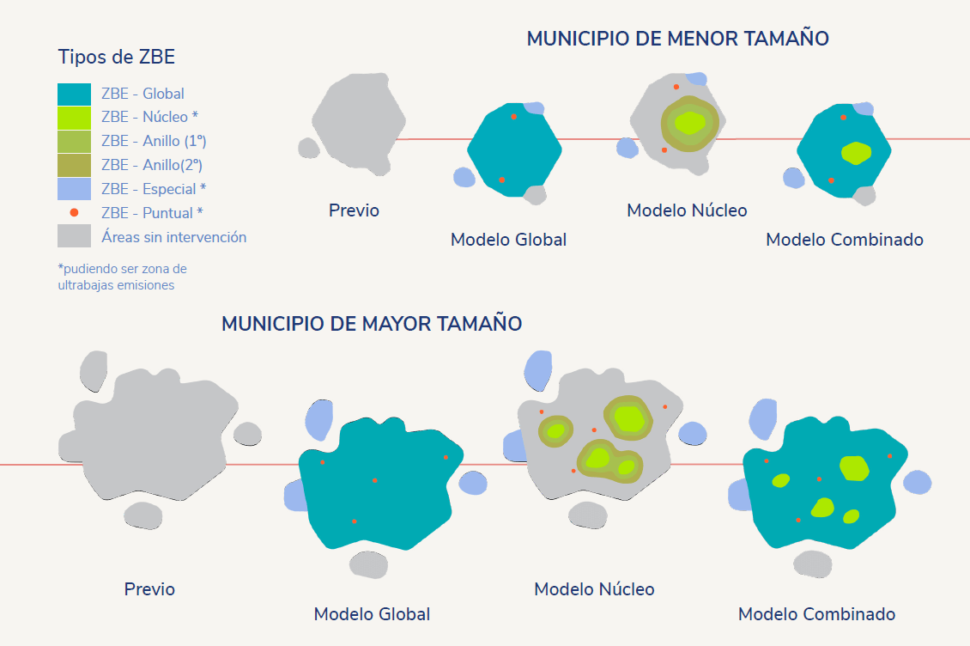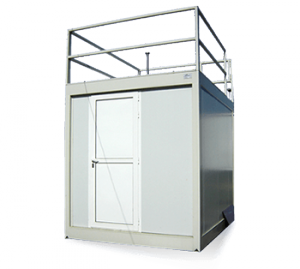The current mobility and transport model is one of the main sources of pollutant emissions into the atmosphere, with the road transport sector responsible for 26.9% of Spain’s greenhouse gas emissions, 6.7% of PM 2.5 emissions and 30.6% of total NOx emissions into the atmosphere.
As a result, the Climate Change and Energy Transition Law requires certain Spanish municipalities to adopt sustainable urban mobility plans and implement measures to reduce emissions.
One of these measures is the implementation of Low Emission Zones, whose definition and guidelines for their creation we will discuss in this article.
What are Low Emission Zones?
A Low Emission Zone is defined as an area delimited by a public administration where restrictions on access, circulation and parking of vehicles are applied in order to improve air quality and reduce greenhouse gas emissions, according to the classification of vehicles by emission level.
The municipalities that will have to adopt these measures are:
- Municipalities with more than 50,000 inhabitants.
- Island territories.
- Municipalities with more than 20,000 inhabitants that exceed the limits for pollutants set out in Royal Decree 102/2011 of 28 January.
Applicable Regulations
Last 28th December, Royal Decree 1052/2022, of 27th December, was published in the Official State Gazette (BOE), which regulates the Low Emission Zones (LEZ) and takes as a reference Royal Decree 102/2011, of 28th January, on improving air quality.
RD 1052/2022 reflects the new obligations regarding the delimitation and regulation of these zones, identifying and defining the measures that local councils must implement, as well as describing the additional measures that this RD introduces in terms of air quality control.
The Royal Decree now approved has its direct antecedent in Article 14.3 of Law 7/2021 of 20 May on Climate Change and Energy Transition.
All of this is in line with national planning instruments, such as the National Integrated Energy and Climate Plan (PNIEC) for greenhouse gases and the National Air Pollution Control Programme (PNCCA) for air pollutants.
Guidelines for the creation of the new Low Emission Zone 2023
To facilitate the development of LEZs, the Ministry for Ecological Transition and the Demographic Challenge (MITECO) has drawn up the guidelines of the new low emission zone 2023 that represents a basic guide for the development of the zones by local entities.
In fact, they serve as a reference for establishing the minimum project content required in the new regulations effective from 1 January 2023 (Royal Decree 1052/2022, of 27 December).
Below are the most representative points to be taken into account:
Diagnosis
The first step prior to the implementation of one or several low emission zones is to carry out a diagnosis of the initial scenario that will allow the establishment of the minimum objectives with which the LEZ will be constituted.
It is advisable to carry out preliminary studies to determine air quality, an estimate of the polluted surface area (in km2), noise maps and emission sources.
To this end, it is important to take samples at different points to determine the concentrations of the pollutants established in RD 102/2011 and the acoustic indices reflected in RD 1367/2007.
Boundary and extent
Once the existing air quality and noise situation is known, it is necessary to determine the boundary, extent and number of low emission zones.
This will take account of the fact that the size of the LEZ should be significant and sufficient to meet the objectives set, and should cover a significant proportion of the population, urban area or vehicle traffic.
In addition, the perimeter should be defined in such a way as to facilitate access on foot to any point in the hinterland and to discourage the use of private transport.
Types of LEZ
Once the diagnosis has been made and the extent is known, it is necessary to select the typology according to geographical criteria:
- Core: Delimitation of a specific area in the municipality, model reduced to a part of the municipality.
- Ring: One or more transitional zones of the core LEZ, with the application of gradual measures to avoid a possible border effect.
In addition, two typologies can be added in a complementary way:
- Special: These delimit areas with special characteristics due to a high number of car trips (business parks, industrial estates, university campuses, health or education areas, etc.).
- Punctual: sections where it is desirable to ensure a higher quality and safer environment by reducing traffic.

LEZ types in Spain. Source: Guidelines for the creation of Low Emission Zones, FEMP and MITECO, April 2023.
It is worth mentioning that those municipalities with less than 50,000 inhabitants may establish temporary LEZs in cases where a significant increase is expected at specific times (holidays, events, etc.).
The bottom line is that the size of an LEZ must be significant and sufficient to achieve its objectives of improving air quality and mitigating climate change.
Follow-up and monitoring
The local authorities must carry out continuous follow-up and monitoring to assess the effectiveness and environmental impact of the implementation of the low emission zone, with the possibility of adopting or correcting different aspects to improve its effectiveness.
Annex II of RD 1052/2022 reflects the air quality indicators related to road traffic and the evolution of pollutants (from the pre-implementation diagnostic phase and from the year of approval) at the air quality stations and control points defined in the design of the LEZ and surrounding areas will be taken as a reference.
- Nitrogen dioxide (NO2)
- Hourly limit value (HLV)
- Annual limit value (ALV)
- Particulate matter PM 10
- Daily limit value (DLV)
- Annual limit value (ALV)
- Particulate matter PM 2.5
This requires type-approved air quality stations that monitor in real time and report the data to the competent authorities, who will act accordingly in case of exceedances of the limits for any pollutant.
Moreover, this information should be made public and accessible to citizens and businesses.
Access and circulation criteria
The instrument used to determine access restrictions is the environmental sticker issued by the Dirección General de Tráfico (DGT), which reflects the emission levels of vehicles and must be displayed in a visible and controllable location.
The classification, from least to most polluting, is as follows:
- Zero emissions label: More efficient vehicles such as battery electric, extended range, plug-in hybrid or fuel cell vehicles.
- Environmental label: Hybrid, gas or both.
- Label C: Combustion vehicles that meet the latest EURO emissions standards.
- Label B: Combustion vehicles that do not comply with the EURO emissions standards but with the previous ones.
In addition, access and circulation in the LEZ may involve the payment of a congestion charge or toll, to be determined by the competent administration, in order to encourage modal shift and reduce traffic.
Conclusion
The aim of LEZs is to contribute to improving air quality and mitigating climate change, improving the health and quality of life of citizens and promoting more sustainable mobility by restricting access to the most polluting vehicles.
The creation of these zones is mandatory in certain municipalities and, since 1 January 2023, has been regulated by Royal Decree 1052/2022, which aims to regulate the minimum requirements to be met by the LEZs established by local authorities and to provide homogeneous legislation throughout the national territory.
This Royal Decree emphasises the need for continuous monitoring of air and noise quality, also as an aid to defining the area of the municipality where traffic will be restricted, and to assess over time whether the measures adopted are in line with the National Plan for Adaptation to Climate Change 2021-2030.












